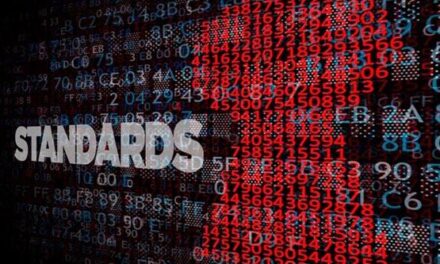Smart Healthcare: How IoT is Reshaping the Industry
The global IoT in healthcare market is projected to reach US$ 181.4 Billion in 2022, anticipated to grow at a CAGR of 18.0%, reaching US$ 952.3 Billion by 2032. The market is slated to document a Y-o-Y growth rate of 20.7% from 2021-2022, increasing from the previously registered value of US$ 150.3 Billion.
The increased use of healthcare information systems, the rise of big data in healthcare, enhanced device accuracy and connection, and the high penetration of connected devices in healthcare are driving the IoT industry. The Internet of Things (IoT) has the potential to transform traditional paper-based healthcare treatment by facilitating real-time patient data access and remote patient monitoring. The introduction of this digital healthcare technology addressed the looming demand for improved diagnostics and focused therapy solutions.
It not only allows physicians to monitor patients remotely, but it also serves as a fitness and wellness tracker for athletes and a dosage reminder for patients. The successful adoption of IoT in the remote monitoring of diabetic and asthma patients, combined with the widespread use of fitness and wellness gadgets, has resulted in a significant demand for the IoT healthcare industry.
What is the Potential of the IoT in Healthcare Market?
The COVID-19 pandemic has increased demand for wearable gadgets that measure health and fitness information, and location, and can be coupled with devices such as computers and cell phones. Because of the concern of COVID-19, the growing rate of adoption of health and fitness will increase purchases of in-stock wearables for real-time health monitoring, further raising the demand for development in healthcare IoT technology.
Big data analytics is a rapidly growing area in IoT. Big data analytics need to incorporate the most current advancements in machine learning, logical methods, computational intelligence, and data mining. Many healthcare professionals, including payers and providers, are increasingly studying big data to get in-depth expertise. Even though these initiatives are still in their early phases, they are expected to contribute to addressing industry-related issues such as inconsistency in healthcare quality and rising healthcare costs.
Improvements in the quality of people’s everyday health and living activities, as well as big data analytics to support and encourage such research efforts, are among the drivers driving market expansion, as IoT-based healthcare systems play an important part in the growth of medical information systems. Patient tracking, tracing, and monitoring are critical for improving the healthcare system.
Several governments throughout the world have launched digital health projects. These initiatives range from large investments in infrastructure and digital health promotion to organizing conferences, inviting shareholders and major market participants, restructuring the healthcare system, and implementing regulations mandating the use of HER (electronic health records) using advanced technology.
Key Challenges Influencing IoT in Healthcare Market Expansion
In healthcare, outdated infrastructure is a well-known concern. It has been demonstrated that numerous firms in the healthcare business are still encumbered by legacy healthcare IT infrastructure.
With the introduction of newer technologies, these companies require the appropriate workforce to apply them. With the increasing use of IoT, a big issue that IoT poses is data security and privacy, which increases the healthcare industry’s exposure to cyber-attacks.
IoT in Healthcare Regional Outlook
How do the Various Regions Influence the Growth of the IoT in the Healthcare Market?
Asia Pacific is seeing tremendous expansion in the IoT in the healthcare market. Because the APAC region contains more than half of the world’s population, any big technological shifts, such as those foreshadowed by IoT, are likely to determine the region’s future.
Many Asian nations, including China, Japan, and India, are embracing information-intensive IoT technologies to meet rising healthcare service demand, and as a result, APAC is likely to provide significant prospects to use IoT in healthcare solutions.
According to data published by FMI, the aforementioned countries are expected to document CAGRs worth 19.5%, 19.2%, and 21.1% respectively. Furthermore, China, Japan, and India will likely document market values of US$ 98.2 Billion, US$ 73.1 Billion, and US$ 85.7 Billion respectively.
What are the Growth Prospects of the IoT in the Healthcare Market in the USA?
The healthcare Internet of Things (IoT) industry in North America led the worldwide market and is expected to continue in this manner over the projected period. This expansion may be attributed to reasons such as the increasing acceptance of healthcare IT solutions, the presence of significant players, and the availability of advanced infrastructure in the USA.
Rising measures to reduce medical costs, resulting in a transition from a fee-for-service to a value-based approach, have also boosted the industry significantly. According to the report, demand for IoT in healthcare solutions in the USA is poised to surge at an 18.9% CAGR until 2032. An absolute opportunity worth US$ 171.4 Billion is projected for the USA market, along with a market value of US$ 208.1 Billion in 2032.
How Competitive is the IoT in Healthcare Market?
The Internet of Things (IoT) in healthcare is somewhat competitive, with numerous prominent competitors. Certain strategic efforts, such as mergers, new product launches, acquisitions, and collaborations, are being implemented by corporations to assist them increase their market position.
IoT in Healthcare Market Developments
· Medtronic worked with IBM Watson in January 2019 to provide IQcast, a new feature of its current product Sugar.IQ, for iOS mobile devices in the USA. The software would provide patients with a hypoglycemic episode to monitor their low glucose level by anticipating the occurrence 1 to 4 hours in advance.
· In April 2019, Royal Philips and Spencer Health Solutions expanded their relationship to provide chronically sick patients in selected European Union (EU) nations with in-home medication adherence and the Philips telehealth platform.
These insights are based on a report IoT in Healthcare Market by Future Market Insights.











